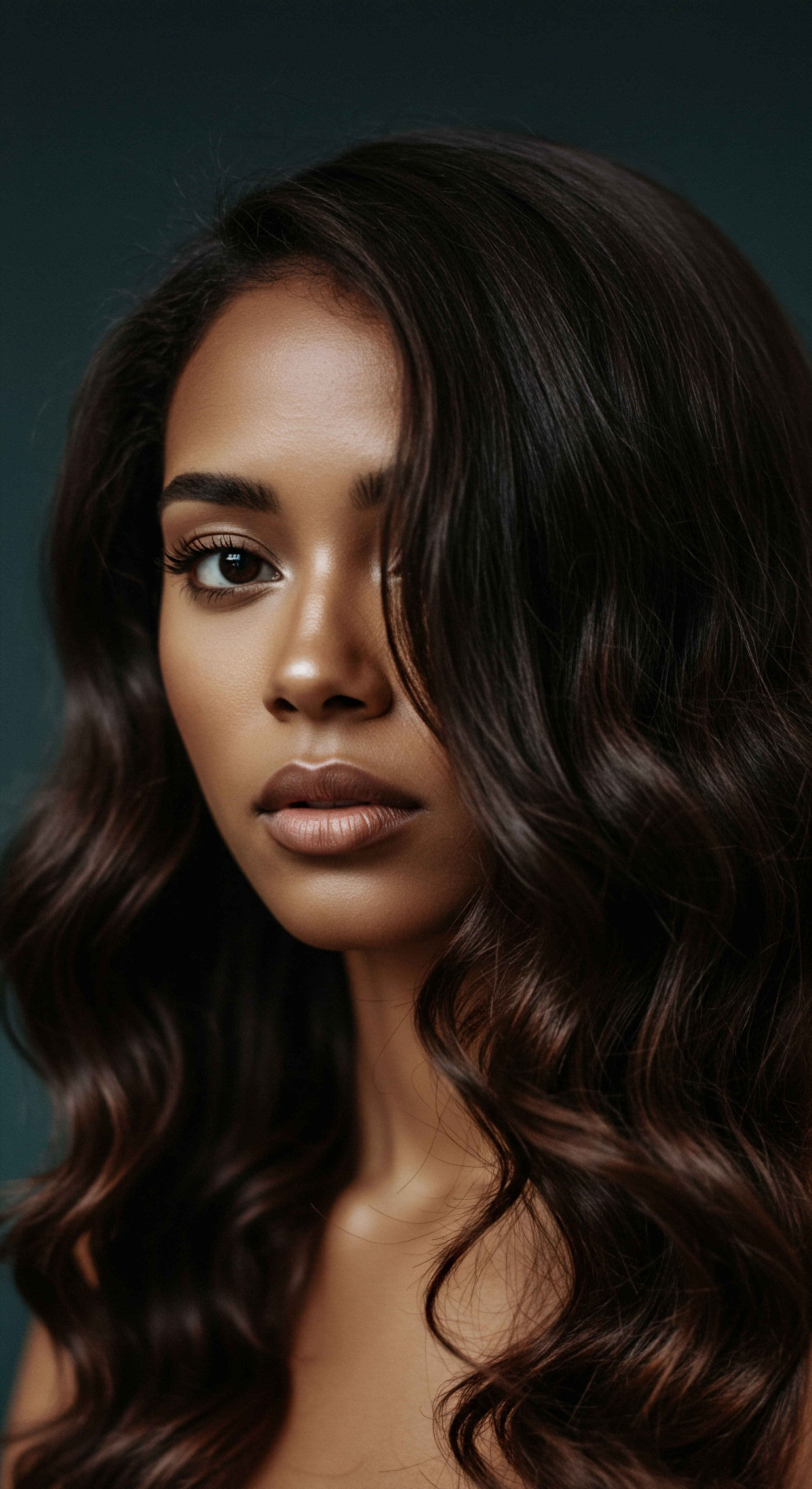
Roots
To truly comprehend the delicate dance between our precious strands and the quiet hours of slumber, we must first turn our gaze to the very foundations of hair itself. It is a world often overlooked, yet brimming with the secrets of its resilience and vulnerability. Think of your hair not merely as an adornment, but as a living tapestry, each strand a testament to intricate design, capable of both remarkable strength and surprising fragility. The question of how sleep headwear shapes hair dryness is not a simple one; it asks us to delve into the microscopic architecture of a single hair, to appreciate its inherent need for moisture, and to understand the forces that conspire against it, especially as we drift into unconsciousness.
Understanding the intrinsic nature of textured hair, with its unique coil patterns and inherent inclination towards moisture loss, provides the groundwork for appreciating why protective measures during sleep are so vital. Each twist and turn in a textured strand presents more surface area for environmental elements to interact with, and more opportunities for its precious hydration to escape. This architectural marvel, while beautiful, also requires a thoughtful approach to preservation.
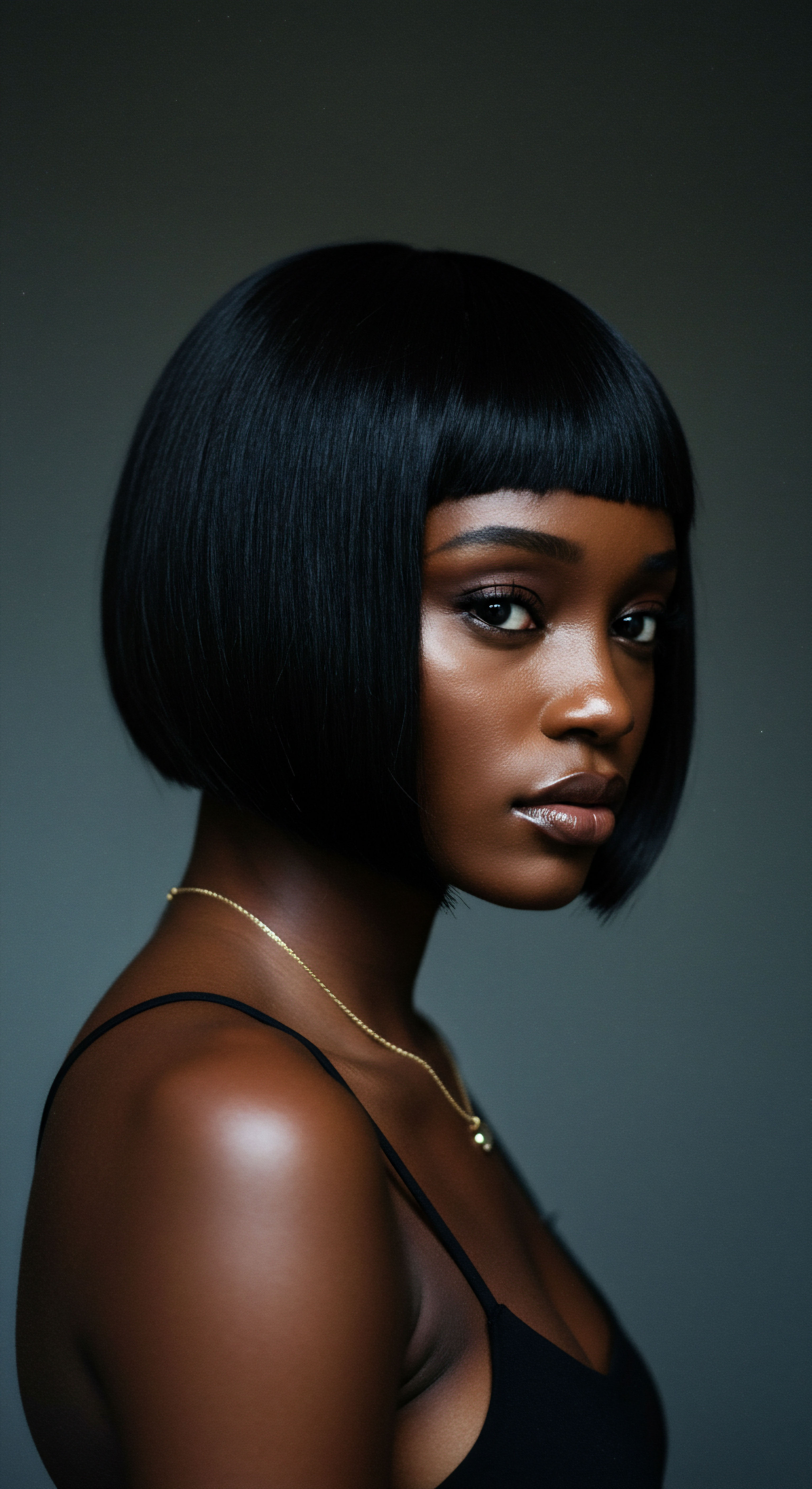
Hair Anatomy and Its Thirst for Moisture
At its very core, a single strand of hair is a complex biological marvel. It consists of three primary layers ❉ the medulla, the cortex, and the cuticle. The Cuticle, the outermost layer, functions as the hair’s primary shield. It is composed of overlapping, scale-like cells, much like shingles on a roof.
When these scales lie flat and smooth, the hair feels soft, reflects light, and, crucially, retains moisture effectively. When these scales are raised or damaged, the hair becomes rough, dull, and prone to losing its internal hydration to the surrounding air. This is where the concept of dryness begins its unwelcome presence.
The Cortex, nestled beneath the cuticle, comprises the bulk of the hair strand. It holds the keratin proteins that give hair its strength and elasticity, and it is also where the hair’s natural moisture content resides. This moisture is essential for keeping the hair supple, flexible, and resistant to breakage. Without adequate hydration, the cortex becomes brittle, leading to fragility and a greater susceptibility to damage from even gentle manipulation.
The cuticle, a hair’s protective outer layer, dictates its ability to retain vital moisture.

Textured Hair Classification and Moisture Needs
The diverse world of textured hair, often categorized using systems that describe curl patterns from wavy (Type 2) to coily (Type 4), directly relates to its inherent moisture requirements. As the curl pattern becomes tighter and more coily, the hair’s natural oils, produced by the scalp’s sebaceous glands, find it more challenging to travel down the entire length of the hair strand. This means that highly textured hair is often naturally drier at its ends than straighter hair types.
- Type 2 Hair ❉ Generally wavy, with a looser curl pattern, allowing natural oils to distribute more easily.
- Type 3 Hair ❉ Ranges from loose curls to tight, springy spirals, where oil distribution can become more challenging.
- Type 4 Hair ❉ Characterized by tight coils and zig-zag patterns, often the most prone to dryness due to the difficulty of natural oils traversing the entire strand.
The unique helical structure of textured hair also means it has more points of potential friction and exposure. Each bend in the strand is a point where the cuticle can be more easily lifted or abraded, leading to increased porosity and, consequently, greater moisture loss. This intrinsic characteristic makes nighttime protection not merely a preference, but a fundamental aspect of hair preservation for many.

The Daily Cycle of Hydration
Hair is constantly interacting with its environment, absorbing and releasing moisture based on humidity levels, product application, and physical contact. During the day, we might apply moisturizers, leave-in conditioners, or styling products to replenish lost hydration. However, the hours of sleep present a unique challenge.
For many, sleep involves hours of direct contact between hair and a pillowcase, often made of materials that can actively draw moisture away from the hair. This nightly interaction can subtly, yet persistently, contribute to hair dryness, making our efforts during waking hours less effective.
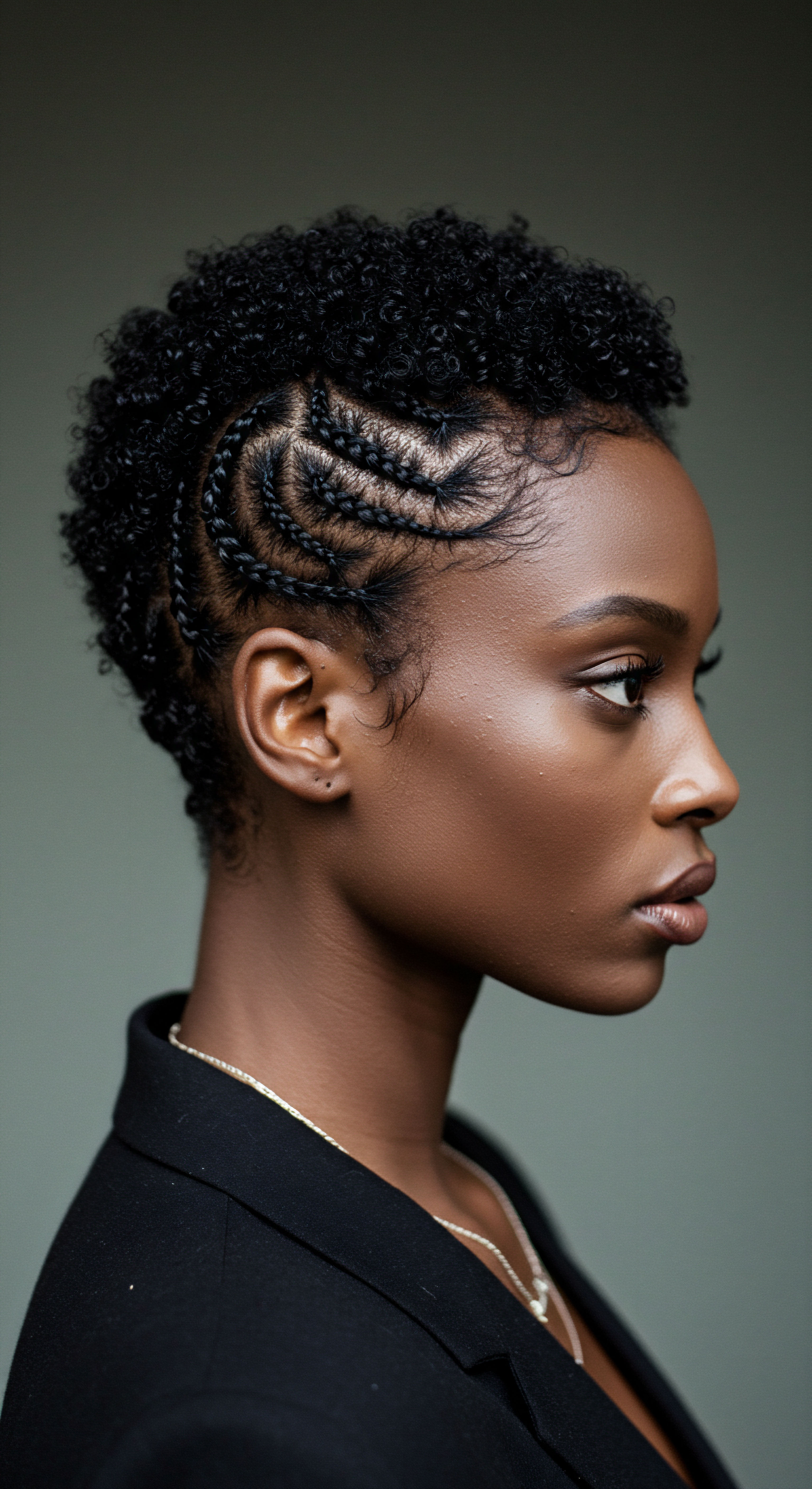
Ritual
As the sun dips below the horizon and the day’s pursuits give way to the promise of rest, our thoughts often turn to winding down, to the quiet routines that prepare us for sleep. Yet, for those of us who tend to textured hair, this transition holds another layer of consideration ❉ the nightly ritual of safeguarding our strands. It’s in these quiet moments, as we prepare for slumber, that we can either unknowingly contribute to hair dryness or, with thoughtful intention, create a sanctuary for our hair, preserving its moisture and vitality. This section guides us through the practical wisdom of sleep protection, moving from a general understanding to the specific actions that make a tangible difference.
The choices we make about our sleep environment, particularly what our hair rests upon or is enveloped by, carry significant weight. This is where the concept of sleep headwear steps onto the stage, not as a mere accessory, but as a silent guardian against the nightly assault on hair’s hydration.
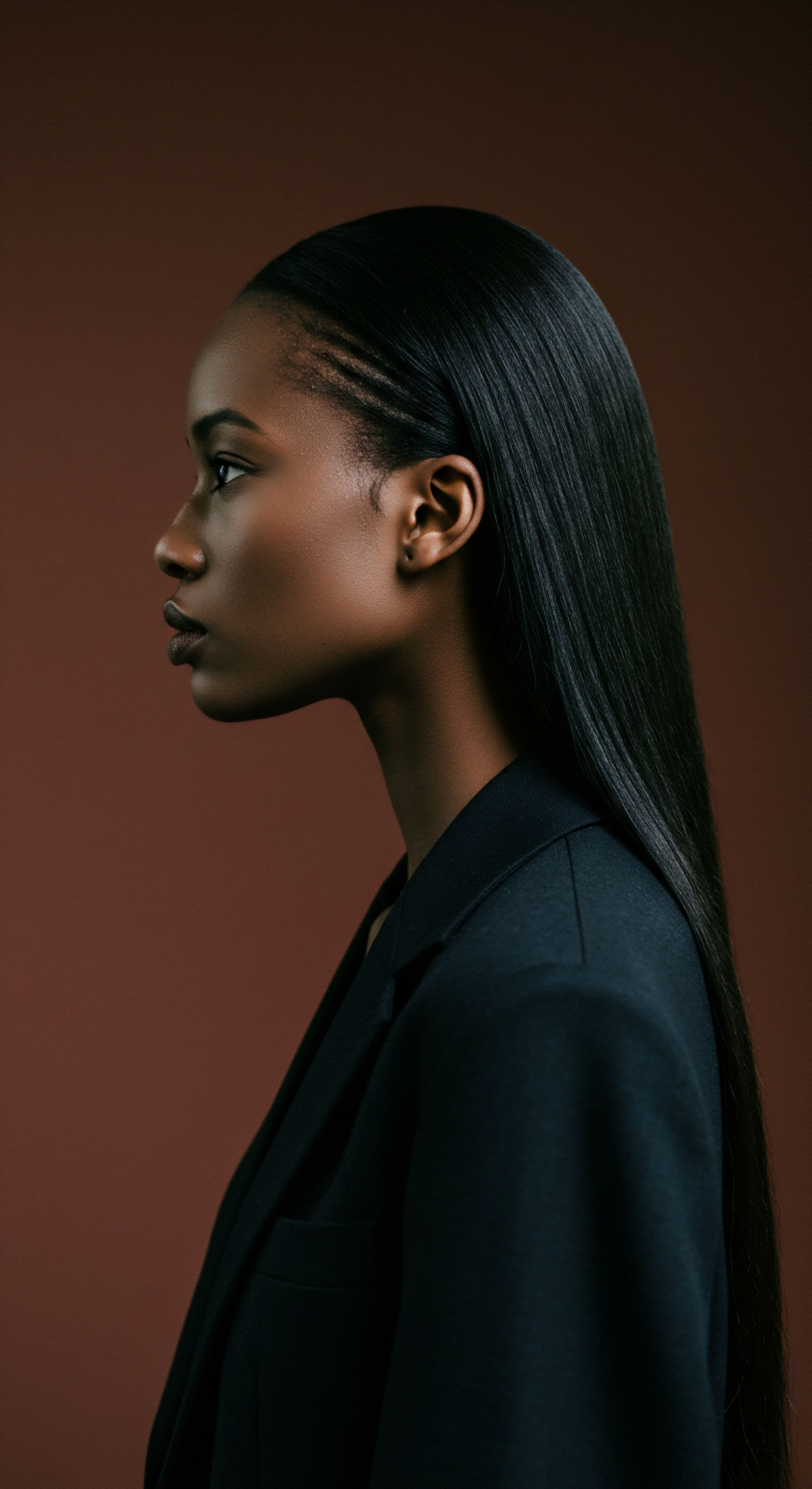
The Unseen Adversary Pillowcase Friction
Before we delve into the virtues of sleep headwear, it’s vital to recognize the primary antagonist in the nightly battle against dryness ❉ the humble pillowcase. Cotton, a common material for pillowcases, is renowned for its absorbency. While this quality makes it excellent for towels, it also means it readily wicks moisture, including the natural oils and applied products, directly from your hair. This constant drawing away of hydration over several hours can lead to significant dryness, frizz, and even breakage due to the friction created as hair rubs against the rougher cotton fibers.
Cotton pillowcases, while absorbent, can strip hair of its essential moisture during sleep.
A compelling study published in the Journal of the Society of Cosmetic Chemists explored the tribological properties of human hair against various textile surfaces, including cotton. Researchers observed that the friction coefficient between hair and cotton was significantly higher compared to smoother materials like silk. This increased friction translates directly to greater mechanical stress on the hair cuticle, causing the delicate scales to lift and abrade.
Over time, this cumulative damage compromises the hair’s ability to retain moisture, making it more porous and prone to dryness and breakage. This data point underscores the scientific basis for choosing smoother sleep surfaces.
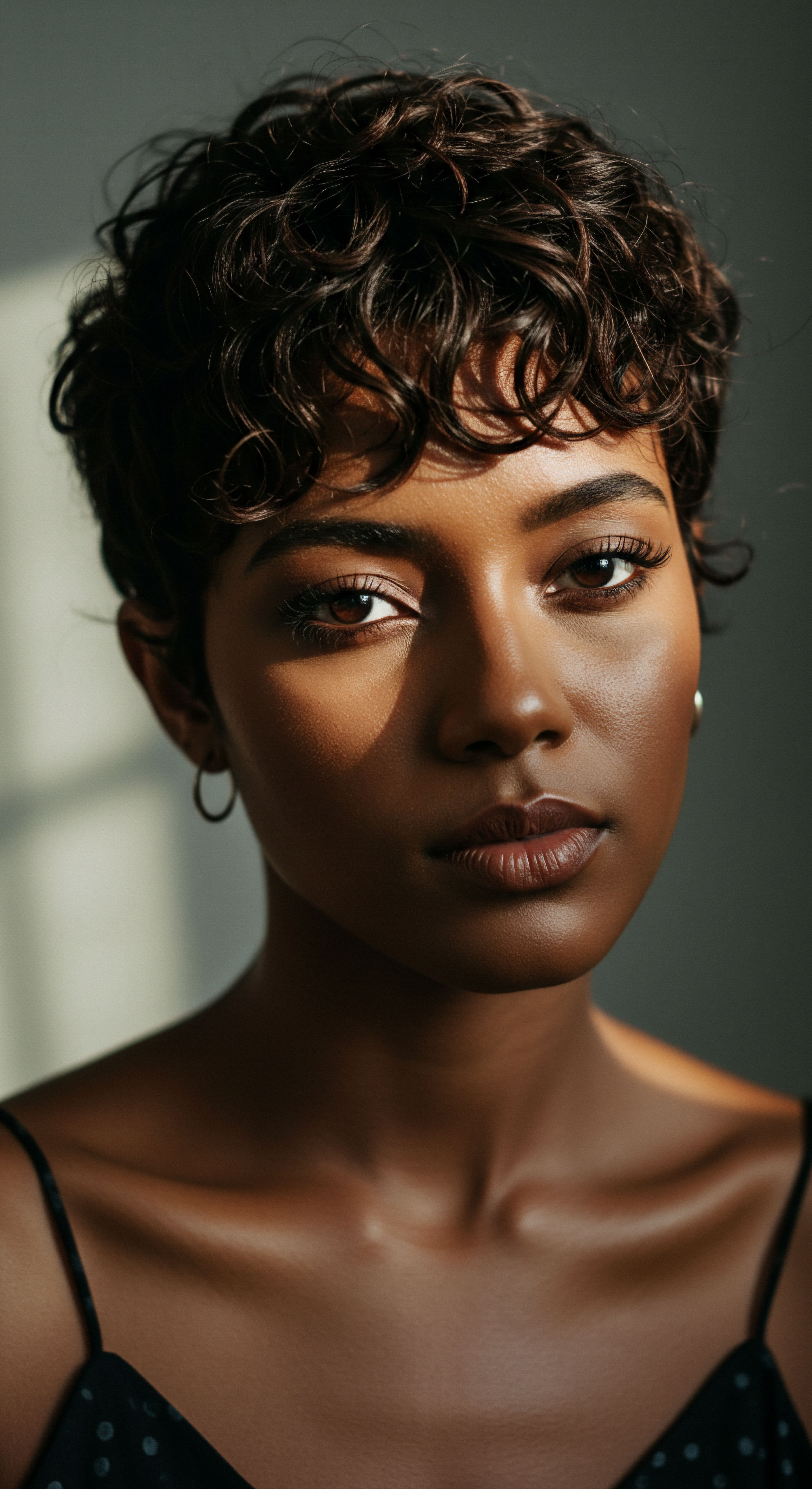
The Protective Veil Choosing Your Headwear
This brings us to the realm of sleep headwear, a category designed specifically to create a barrier between your hair and potentially drying or damaging surfaces. The right sleep headwear acts as a personal climate control system for your hair, sealing in moisture and minimizing friction.

Why Material Matters for Moisture Retention?
The material of your sleep headwear is perhaps the single most critical factor in its effectiveness against dryness.
- Silk ❉ Renowned for its smooth, tightly woven fibers, silk creates minimal friction against hair. Its natural protein structure also means it is less absorbent than cotton, allowing hair to retain its natural oils and applied moisture. This helps keep the cuticle flat and smooth, preserving hydration.
- Satin ❉ While not a natural fiber like silk, satin is a weave that produces a smooth, glossy surface. Like silk, satin reduces friction and is less absorbent than cotton, making it an excellent, often more accessible, alternative for protecting hair from dryness and damage during sleep.
- Bamboo ❉ An increasingly popular choice, bamboo fabric is soft, breathable, and has moisture-wicking properties, but in a way that can be gentler on hair than cotton. Its smooth surface also reduces friction.
The consistent use of these materials helps to maintain the integrity of the hair’s cuticle, thereby safeguarding its internal moisture reserves.
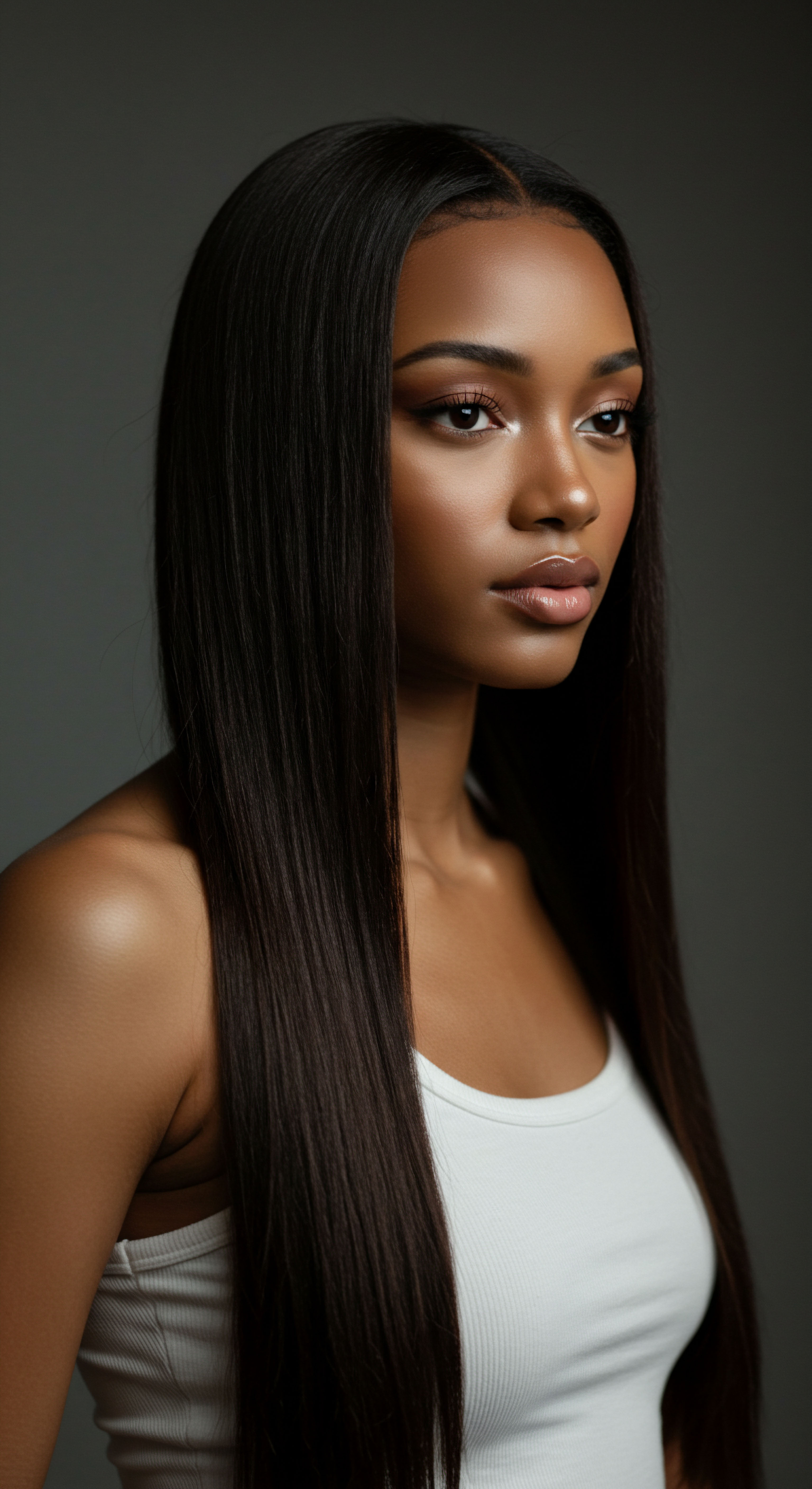
Practical Wisdom for Nighttime Care
Beyond the material, how you wear your sleep headwear also plays a role in its efficacy.
- Secure, Not Tight ❉ The headwear should be snug enough to stay on throughout the night but never so tight that it causes tension on your hairline or scalp. Excessive tension can lead to breakage and discomfort.
- Hair Preparation ❉ Before donning your headwear, ensure your hair is properly moisturized. A light leave-in conditioner or hair oil can work wonders, and the headwear will help seal in these products.
- Style Before Sleep ❉ For textured hair, styling it in a loose pineapple, braids, or twists before covering it can further minimize tangles and preserve curl patterns, reducing the need for excessive manipulation in the morning.
The consistent application of these practices forms a powerful ritual, transforming the act of going to sleep from a potential source of hair dryness into a restorative period for your strands.
| Material Type Cotton |
| Friction Level High |
| Moisture Absorption High |
| Impact on Hair Dryness Increases dryness, frizz, and breakage |
| Material Type Silk |
| Friction Level Very Low |
| Moisture Absorption Low |
| Impact on Hair Dryness Preserves moisture, reduces friction |
| Material Type Satin |
| Friction Level Low |
| Moisture Absorption Low |
| Impact on Hair Dryness Preserves moisture, reduces friction |
| Material Type Bamboo |
| Friction Level Low to Medium |
| Moisture Absorption Medium |
| Impact on Hair Dryness Gentler than cotton, moderate moisture retention |
| Material Type Choosing low-friction, low-absorption materials is paramount for combating hair dryness during sleep. |

Relay
Beyond the tactile comfort and immediate benefits of sleep headwear, lies a deeper exploration into the intricate interplay of science, culture, and personal well-being that shapes our hair’s nightly journey. How does the silent presence of a bonnet or scarf during sleep contribute to the very architecture of our hair’s resilience, not just against dryness, but against the myriad stressors of daily life? This inquiry transcends simple product recommendations, inviting us to consider the holistic implications of protective sleep practices, weaving together insights from dermatological science, material engineering, and the enduring wisdom passed down through generations.
The question of hair dryness, particularly for textured hair, is not isolated; it is a symptom of a broader ecosystem where environmental factors, personal habits, and the inherent characteristics of the hair strand all converge. Understanding this interconnectedness allows us to appreciate the profound, multi-dimensional role that thoughtful sleep headwear plays.

The Micromechanics of Nightly Protection
The primary mechanism through which sleep headwear combats hair dryness is by minimizing mechanical friction. As we shift and turn during sleep, hair rubs against the pillowcase. Even seemingly soft fabrics like cotton possess microscopic fibers that can snag and abrade the delicate cuticle layer of the hair.
This constant friction lifts the cuticle scales, exposing the inner cortex and allowing precious moisture to escape into the environment. The result is hair that feels rough, appears dull, and is more susceptible to breakage.
Materials like silk and satin, with their exceptionally smooth surfaces and low coefficients of friction, act as a gentle buffer. They allow hair to glide effortlessly, significantly reducing the mechanical stress that leads to cuticle damage and moisture loss. This isn’t just about preventing frizz; it’s about preserving the structural integrity of the hair strand itself.

How does Humidity within Headwear Influence Hair Hydration?
Beyond friction, the microclimate created within sleep headwear plays a subtle yet significant role in hair hydration. When hair is enclosed within a bonnet or scarf, especially after applying a leave-in conditioner or moisturizer, a localized pocket of humidity is created. This slightly elevated humidity helps to keep the hair hydrated by reducing the rate of evaporative water loss from the hair shaft.
For textured hair, which is inherently more prone to dryness due to its structural characteristics, this enclosed, humid environment is particularly beneficial. It helps to keep the cuticle scales lying flat and smooth, effectively sealing in moisture and preventing the hair from becoming brittle overnight. This effect is akin to putting a lid on a pot to keep its contents from drying out; the headwear acts as that lid for your hair.
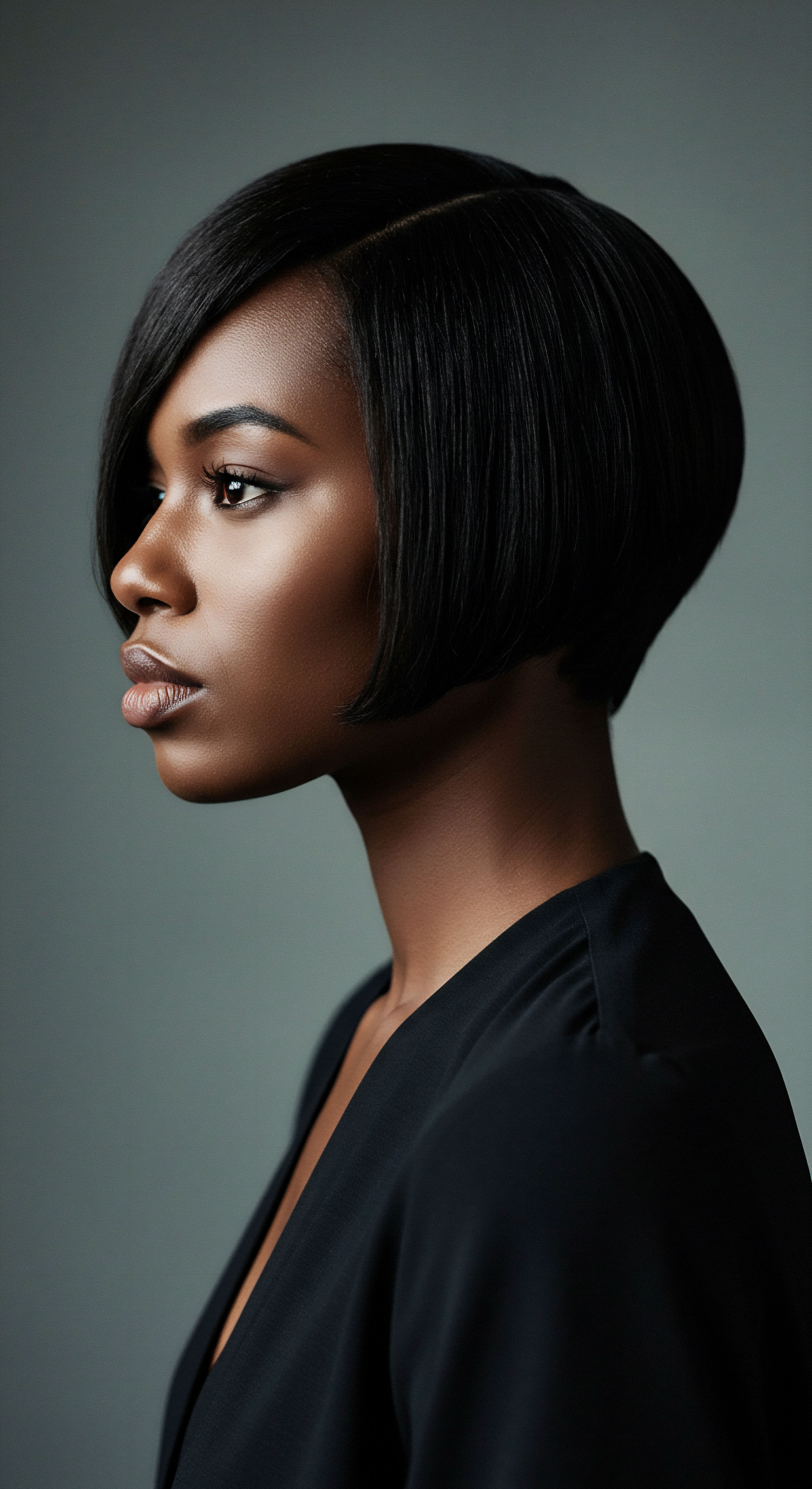
The Cultural Resonance of Hair Covering
The practice of covering hair, particularly during sleep, carries a deep cultural resonance for many, especially within Black and mixed-race communities. This is not merely a modern hair care trend; it is a practice steeped in heritage, passed down through generations. From head wraps worn for modesty or spiritual reasons to bonnets designed for nightly protection, these traditions underscore an innate understanding of hair’s vulnerability and its need for careful preservation.
Historically, hair coverings served multiple purposes, including protection from the elements, hygiene, and cultural expression. The nighttime bonnet, in particular, evolved as a practical solution to maintain intricate hairstyles, prevent tangles, and, crucially, safeguard the hair’s moisture. This cultural wisdom, refined over centuries, intuitively grasped the principles that modern science now elucidates ❉ minimizing friction and maintaining a conducive microclimate for hair health.
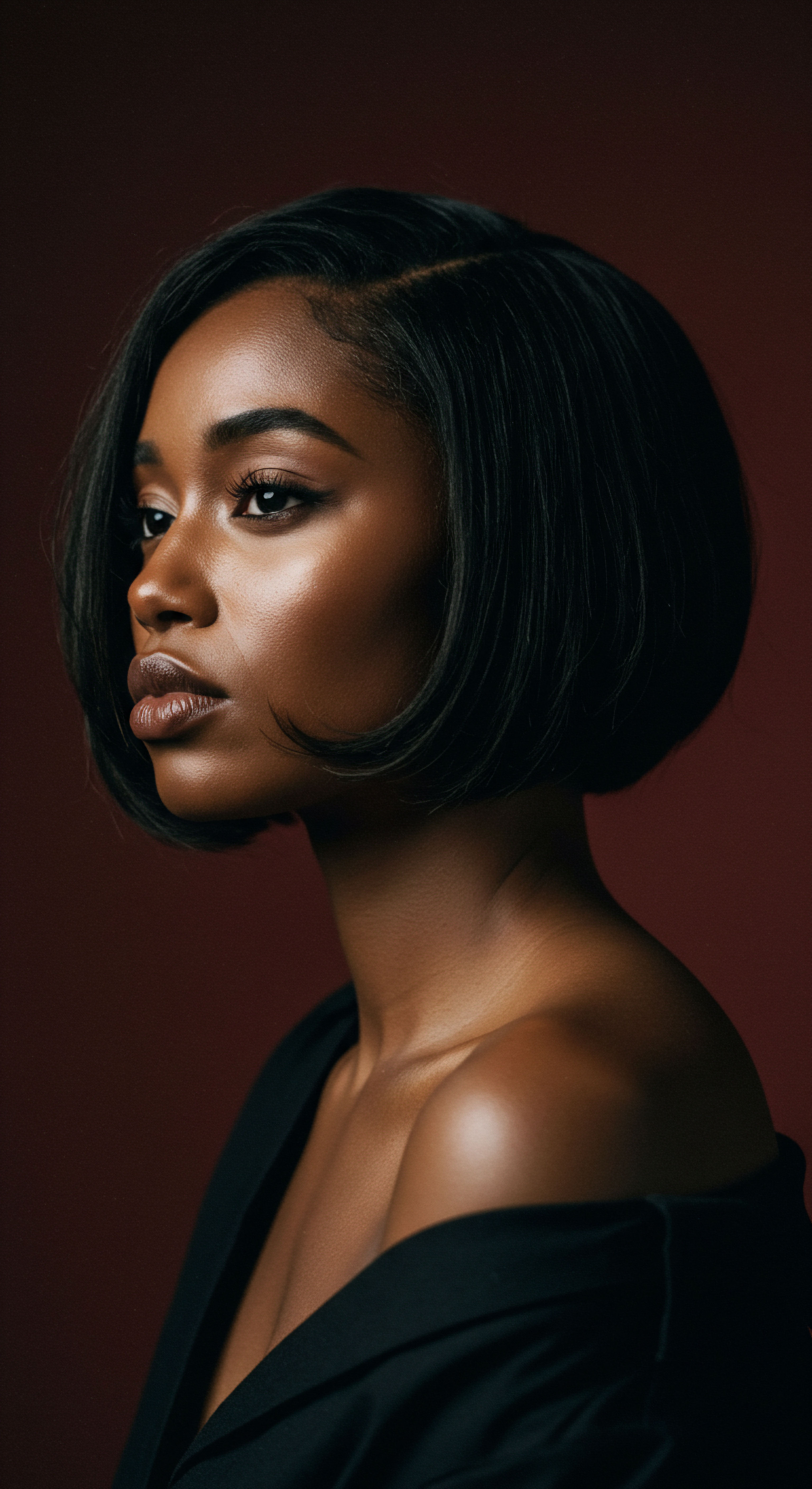
Can Sleep Headwear Impact Scalp Health and Oil Balance?
The relationship between sleep headwear and scalp health is a delicate balance. While the primary aim is hair hydration, the scalp, too, can be affected. A breathable material, even when enclosing the hair, allows for some air circulation, preventing excessive heat and moisture buildup that could potentially lead to scalp issues like fungal growth or irritation. However, a non-breathable or overly tight covering could trap sweat and oils, disrupting the scalp’s natural microbiome.
For individuals with naturally oily scalps, certain sleep headwear might require more frequent washing to prevent product buildup or an imbalance. Conversely, for those with dry scalps, the gentle warmth and reduced exposure to dry air offered by sleep headwear can help to retain the scalp’s natural oils, contributing to overall scalp comfort and health. It is a subtle interaction, but one that warrants consideration in the holistic view of hair wellness.
Ultimately, sleep headwear, when chosen thoughtfully and used consistently, transforms the nightly rest into an active period of hair restoration. It is a simple yet powerful act that honors both the scientific needs of the hair strand and the rich cultural legacy of hair preservation.
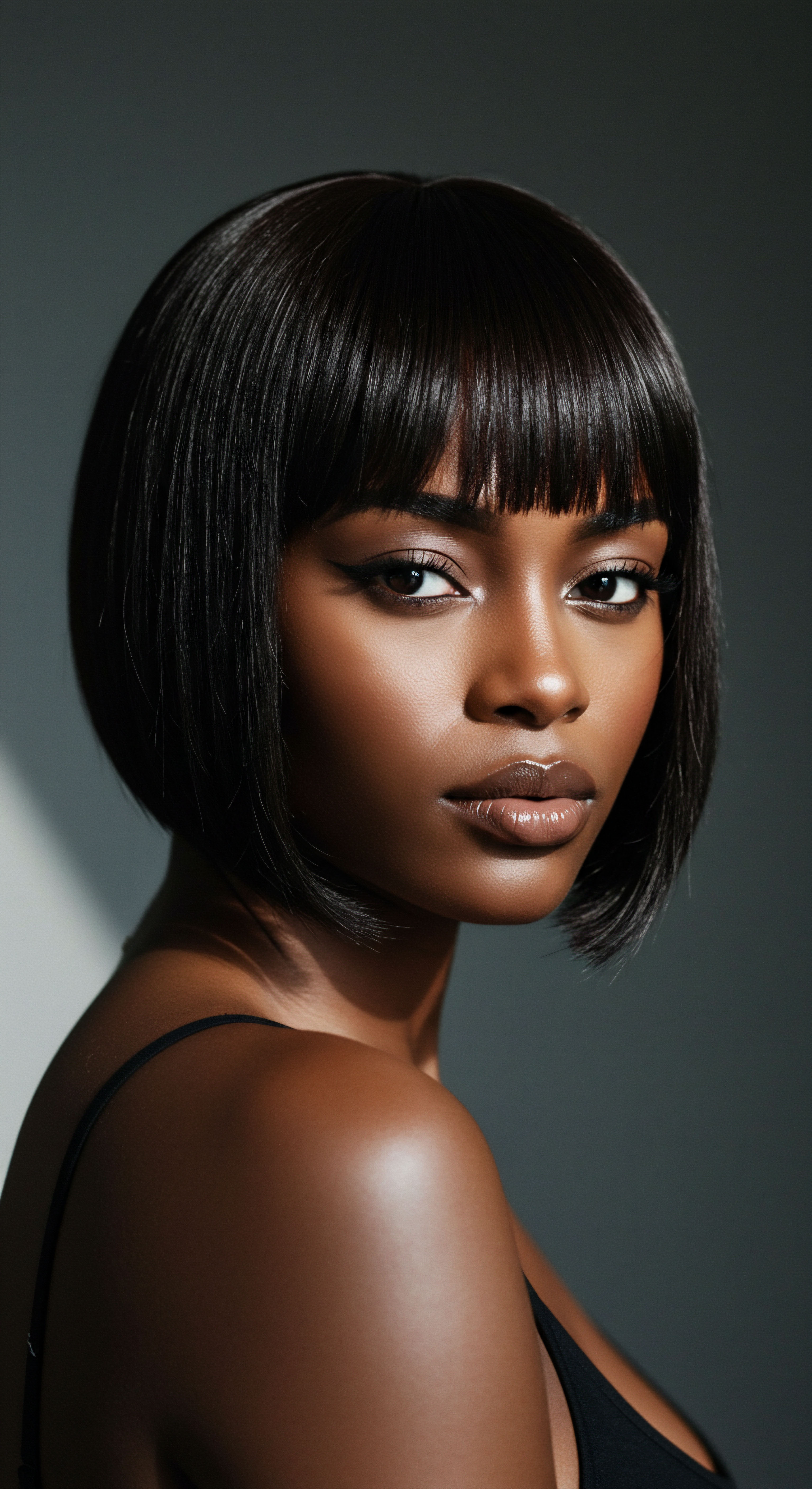
Reflection
As we gently pull back the veil on the nightly journey of our hair, we discover that the seemingly simple act of donning sleep headwear is far from trivial. It is a quiet conversation between intention and preservation, a delicate offering to the strands that tell so many stories. The path to vibrant, hydrated hair is paved not with grand gestures, but with consistent, thoughtful care, especially in those hours when the world sleeps. May your strands find their solace, night after night.

References
- De Wijs, S. A. G. M. H. De Wijs, A. L. A. M. W. & De Wijs, A. L. A. M. W. (2009). Friction and wear properties of human hair. Journal of the Society of Cosmetic Chemists, 60(2), 177-189.
- Price, R. G. & Price, R. G. (2007). Tribological Properties of Human Hair. Cosmetic Science and Technology Series, 28, 239-257.
- Robbins, C. R. (2012). Chemical and Physical Behavior of Human Hair (5th ed.). Springer.
- Khanna, S. & Gunturu, R. (2016). Hair Structure and Function. In Cosmetic Science and Technology ❉ Hair Care (pp. 1-16). Elsevier.
- Dias, M. F. R. G. (2015). Hair Cosmetics ❉ An Overview. International Journal of Trichology, 7(1), 2-15.
- Giacomoni, P. U. & Maibach, H. I. (2004). Hair and Hair Care. CRC Press.